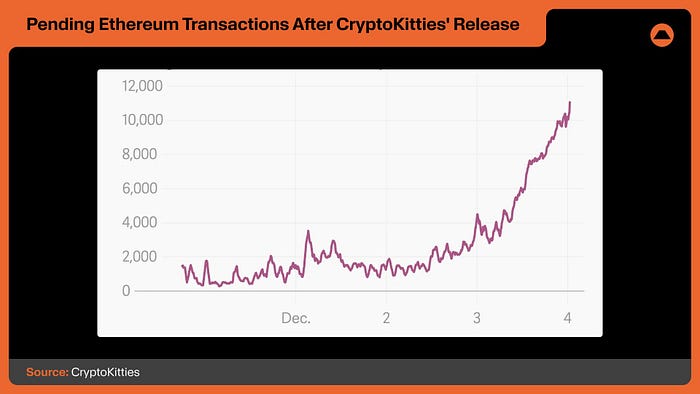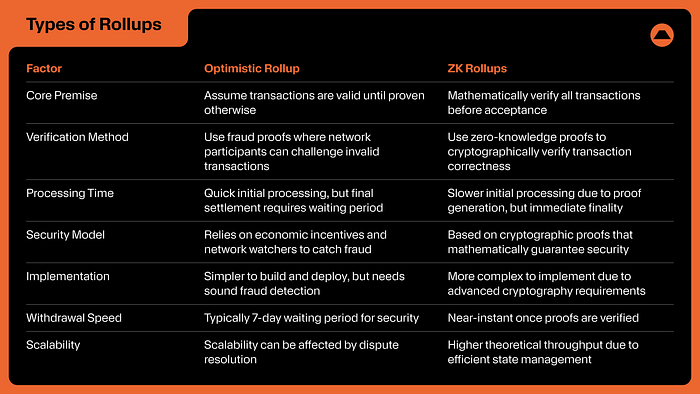
Rollups: The Future of Ethereum Scaling and Why They Matter
Ethereum has long been the leading smart contract platform, promising a decentralized future. However, every major market cycle has exposed a critical flaw: its inability to handle large-scale adoption without slowing down or becoming prohibitively expensive. High gas fees and network congestion have pushed users to seek alternatives, but the real solution lies not in abandoning Ethereum, but in scaling it effectively.
This is where rollups come in. Rollups allow Ethereum to process more transactions at lower costs while retaining its security and decentralization. With adoption surging and billions in total value locked (TVL), rollups are proving to be the most effective path forward.
Why Ethereum Needs Rollups?

Ethereum’s scalability issues became evident as early as 2017, when CryptoKitties — an NFT-based game — clogged the network, showing that even moderate transaction volumes could cause severe congestion. The problem escalated in 2020–2021, as the rise of DeFi and NFTs drove gas fees to unsustainable levels. Many users migrated to alternative Layer 1 (L1) blockchains like Solana, Harmony, Terra, and Fantom, seeking lower costs and faster transactions.
At first, these L1s attracted a significant portion of Ethereum’s user base. However, security flaws and instability soon reversed this trend. Hacks, like the Harmony Horizon Bridge exploit, and catastrophic failures, such as Terra’s UST collapse, highlighted the risks of relying on newer, less-tested blockchains.
Despite its scaling challenges, Ethereum’s strong security and decentralization kept users loyal. Instead of abandoning Ethereum, developers sought solutions that could increase transaction speed and lower costs while maintaining Ethereum’s security. The answer? Rollups.
What Are Rollups?
Rollups process transactions off-chain and then submit them to Ethereum in a compressed form. This reduces congestion and significantly lowers transaction costs while still inheriting Ethereum’s security.
Think of Ethereum as a global computer where every action must be verified by thousands of nodes. This ensures security but slows things down. Rollups take most of the computation off-chain, while Ethereum only verifies the final result.
How Rollups Work?
Transaction Bundling: Transactions are executed off-chain and grouped together.
Compression: Instead of submitting every transaction separately, rollups send a single, compressed transaction summary to Ethereum.
State Root Verification: A cryptographic fingerprint (state root) is posted to Ethereum, ensuring the integrity of rollup transactions.
Security Mechanisms: Rollups use either fraud proofs (for optimistic rollups) or validity proofs (for ZK rollups) to guarantee correctness.
Because transaction data remains available on Ethereum, rollups maintain transparency and verifiability, avoiding the security risks of alternative L1s.
Types of Rollups: Optimistic vs. ZK Rollups
Ethereum rollups come in two main types:
1. Optimistic Rollups
Used by Arbitrum and Optimism, these rollups assume transactions are valid by default unless challenged. If someone detects fraud, they can submit a proof to Ethereum within a 7-day dispute window.
Pros: Lower computational costs, EVM compatibility.
Cons: Slower finality due to challenge periods.
2. ZK Rollups
Used by zkSync and StarkNet, ZK rollups use zero-knowledge cryptography to prove transaction validity before submitting them to Ethereum. This eliminates the need for fraud challenges, enabling instant finality.
Pros: Faster settlement, higher security.
Cons: More computationally intensive, requiring specialized cryptographic proofs.
Both rollup types dramatically reduce gas fees (by 10–100x) and improve transaction speeds, making Ethereum applications significantly more scalable and user-friendly.

The Rise of Rollups: Real-World Adoption
Rollups aren’t just theoretical — they are seeing massive adoption.
Rollups process 13x more transactions than Ethereum itself.
Total Value Locked (TVL) in rollups has surpassed $35 billion USD, making up one-third of all blockchain TVL.
Caldera’s rollups alone have handled 370+ million transactions and serve 10+ million wallets.
Major rollups like Manta Pacific, ApeChain, and B3 are processing over 100,000 transactions daily, showing clear user demand. This isn’t a temporary trend — it’s the future of Ethereum scaling.
Why Rollups Are the Future?
Beyond scalability, rollups offer a more sustainable economic model compared to alternative L1s, which often rely on inflationary token emissions for security. Rollups can sustain themselves purely on transaction fees, ensuring long-term viability.
Additionally, rollups maintain Ethereum’s composability — meaning different rollup-based applications can easily interact and share liquidity, unlike fragmented alternative L1 ecosystems.
The Role of Caldera: Customizable, High-Performance Rollups
Among rollup providers, Caldera stands out by offering customizable rollup solutions with a one-click deployment process. Unlike generic rollups, Caldera allows developers to fine-tune key parameters like fee structures and data availability options.
Interoperability Through the Metalayer
Caldera’s Metalayer takes rollup efficiency even further. Imagine a DeFi platform, a gaming ecosystem, and a social network — all running on separate rollups. With Metalayer interoperability, users can seamlessly transfer assets between them, integrate reputation systems, and create interconnected experiences. This is a game-changer for Ethereum’s ecosystem.
Conclusion: The Rollup Revolution Has Begun
Ethereum’s journey toward mass adoption has faced obstacles, but rollups provide the best solution. By reducing costs, increasing speed, and maintaining security, rollups are setting the stage for the next era of blockchain innovation.
Whether you’re a developer looking to build high-performance applications or a user seeking fast, low-cost Ethereum transactions, rollups are the future. And platforms like Caldera are leading the charge.
Now is the time to embrace rollups — Ethereum’s most powerful scaling solution yet.